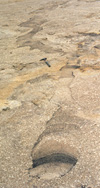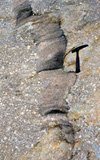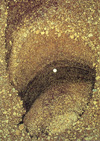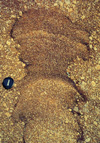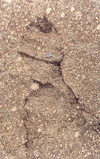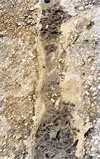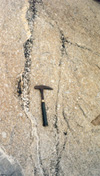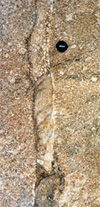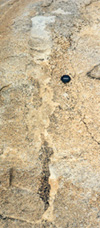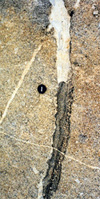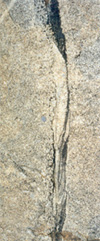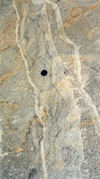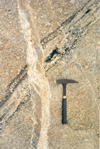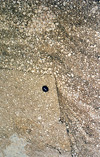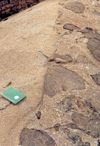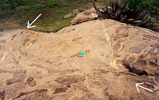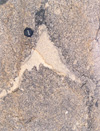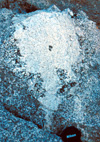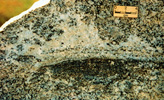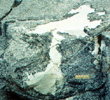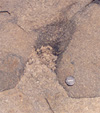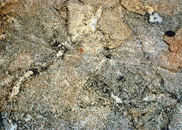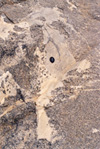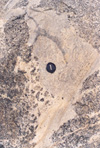Magmatic Structures Continued
Ladder Dykes
Weinberg et al. (2001) explained these structures as marking the stem of a rising plume or diapir where the source moved in relation to the exposed surface, so it marks the path of the source, like a hot spot. There are other less well-developed examples of ladder dykes in other sections of this website (e.g., Complex Dykes below). Ladder dykes and snails are thought to be formed by similar processes and Ellipsoids and Diapirs to represent the leading head of the rising magma batch on top of the stem.
|
A) Long ladder dyke, Tavares pluton
|
B) Detail of A
|
|
E) Begining of dyke in A), Tavares pluton |
D) Detail of dyke in A), Tavares pluton |
|
E) Poorly developed ladder dyke, Conceicao das Creoulas pluton
|
Complex Dykes
These are a group of dykes mostly from the Tavares pluton with complex internal structures. Some of which develop into ladder dykes (C and D), some are split along strike in one mafic part and a felsic part (E and F, also D), G) has irregular schlieren roughly parallel to the walls, and H) is a composite dyke formed by an early darker rock intruded by a later whiteish dyke, which cuts across the early dyke from right to left, upwards in the photo. At present most of these features remain unexplained.
|
A) Dyke breccia, Itaporanga pluton
|
B) Several interlinked complex dykes
|
C) Ladder dyke going into K-feldspar megacryst rich magma
|
|
|
|
F) Mafic and felsic complex layering in dyke
|
G) Schlieren in dyke with non-planar walls
|
H) Composite dyke (later felsic dyke) cutting across layered granite
|
Flow structures
Magmas in the Borborema plutons have a number of internal flow markers, such as the diapirs above, delineated by schlieren, other mafic schlieren marking flow between enclaves, and also as shown here in A) magmatic layering marks flow around a rigid block, and enclaves mark the flow of different internal magma batches (B and C). poor magma batches.
|
A) Magmatic flow around an angular autoclave of granite, Tavares pluton
|
B) Internal contact between magma batches, Itapetim pluton
|
|
C) Deformed enclaves forming an arc at the margins of an internal flow (white arrows), same outcrop as B), Itapetim Pluton
|
Interstitial Melt Extraction
Segregation structures are thought to represent filter pressing of interstitial melt from a crystallizing magma with a solid interconnected network, effectively behaving like an isotropic migmatite. All structures are from Tavares pluton
|
A) Felsic melt flowed into an opening in rigid magma
|
B) Felsic interstitial melt diapir, extracted from crystallizing magma
|
C) Liquefaction structure in an isotropic granitic magma causing separation of mafic minerals from felsic melt and horizontal layering
|
Generally homogeneous granite becomes heterogeneous with mafic-rich bands in the vicinity of an irregular patch of leucocratic granite, suggesting it formed from local extraction of interstitial evolved melt, as magma crystallized. In its entirety, these extraction structures represent a filter pressing step in magma fractionation.
|
D) Irregular 3D extraction structure
|
E) What is going on here?
|
F) Residual material (mafic) from extraction of interstitial melt frozen in pockets (leucosome). Extraction channelways? Same outcrop as B,C and D.
|
Complex extraction features?
|
G)
|
H) Detail of G)
|
Liked the structures? Want to know more? Contact me on my email
